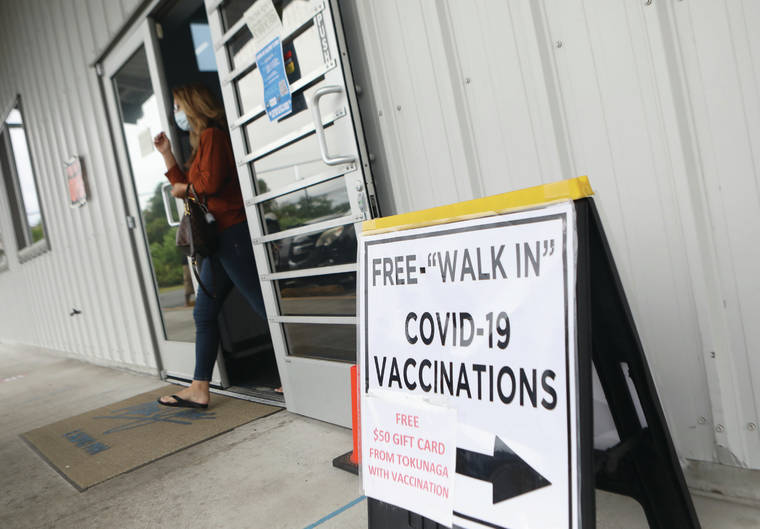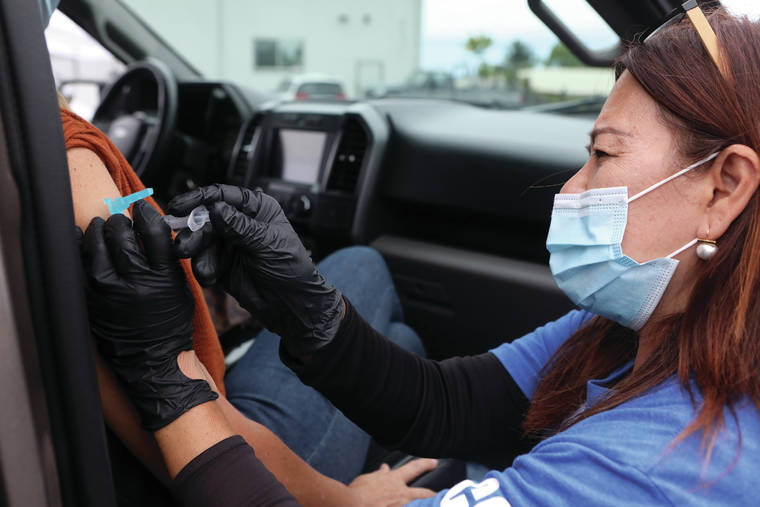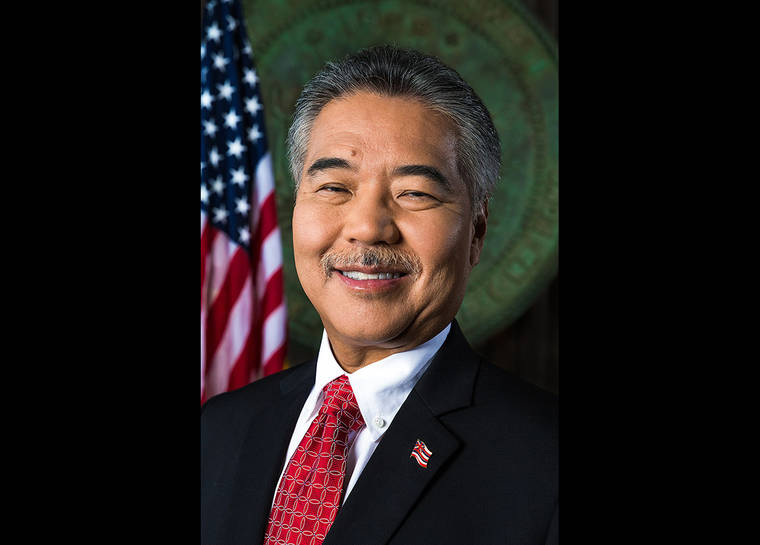Gov. David Ige said Tuesday it’s not yet time to roll back government-imposed coronavirus-related restrictions on restaurants and other businesses.
In a phone interview with the Tribune-Herald, Ige responded to comments made Monday by Greg Maples, chairman of the Hawaii Restaurant Association, who said during a livestream, “It’s time for government to take a bow for the great things that they’ve done and give us back the steering wheel.”
Tuesday was the sixth straight day the count of new COVID-19 cases statewide hit triple digits, with the governor describing that development as “concerning across the state.”
“I do appreciate that restaurants are having challenges at this time, but all of the science and the health care data point to maintaining physical distance and wearing masks as two very key and critical components to slowing the spread of the virus in our community,” Ige told the Tribune-Herald. “The (U.S. Centers for Disease Control and Prevention) continues to recommend that, especially indoors, we maintain six feet of distance between groups of individuals in different households.
“I do know the restaurant industry really wants to be able to fully reopen and get their customers back,” he continued. “But we know that eating in a restaurant is a very high-risk activity for a number of reasons. Obviously, you can’t eat and wear a mask, so you’ll have to take off your mask. You’ll be in an enclosed environment for a prolonged period of time — at least an hour, typically, and longer than that, in some instances. And you’ll be … in a room with people not in your household.”
Ige said he continues to hold discussions with the restaurant association, as well as other business groups, then again pointed to the spike in case counts in the past week.
“COVID is still circulating in our community and we need to implement restrictions at least for a bit longer to get the case counts lower,” he said. “That certainly is concerning all across the state. We continue to monitor the impact on the health care system, the number of COVID patients hospitalized and the fatality rates. And although there’s been a slight increase in the number of hospitalizations, we don’t see the increases that we saw a year ago when we had the peak in the number of coronavirus cases in the state of Hawaii.”
Even though the governor isn’t yet ready to end COVID-related restrictions on businesses, he said he doubts the current situation will spiral to the point a rollback to more restrictive measures will become necessary.
“We do know that treatment of the disease has gotten better,” he said. “There are more therapeutics that are available. Antibody treatments have proven to reduce the severity of illness. So we continue to monitor, and going backwards with restrictions is the absolute last resort. I don’t anticipate that happening at this point in time, but we continue to monitor and we are prepared to do it if we need to to keep our communities healthy and safe.”
As of Tuesday, 59.4% of the population statewide were fully vaccinated, according to the state Department of Health, with 65.8% having received at least one shot of novel coronavirus vaccine.
In Hawaii County, 55% of the population had completed vaccination as of Tuesday. Only Maui was lower at 53%.
The Big Island also had a 4.4% test positivity rate Tuesday — the highest positivity rate among the state’s four counties.
DOH spokesman Brooks Baehr said Monday the uptick in new infections and positivity rates involves mostly unvaccinated individuals.
“We started posting vaccination rates by zip codes all across the state, and the southern half of Hawaii Island has below-average vaccination rates,” Ige said.
According to the DOH, the zip codes representing Pahoa, Mountain View, Naalehu, Ocean View, Honaunau and Captain Cook all show the fully vaccinated rates to be 35% or less of the population, while Volcano and Pahala show rates of between 35.1% and 45%, as does the Hamakua Coast village of Paauilo.
“We are working with the mayor and the district health officers to really target those communities and … reach out to community organizations so that we can get people answers to any questions that they may have, to encourage them to make the smart and wise decision,” Ige said.
Email John Burnett at jburnett@hawaiitribune-herald.com.











